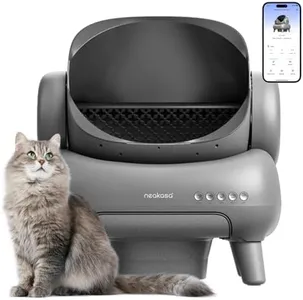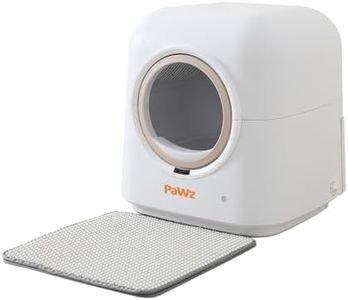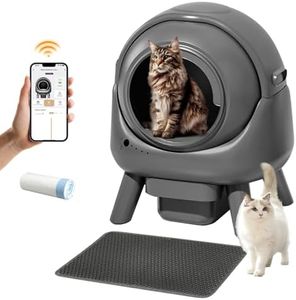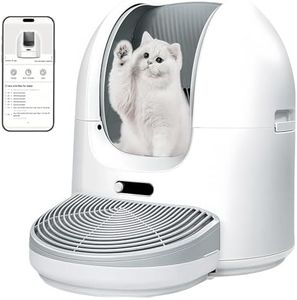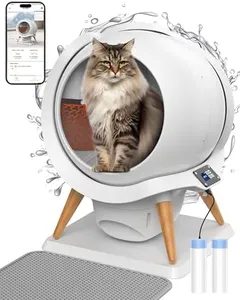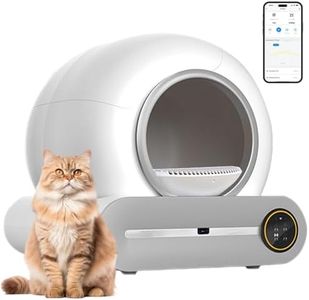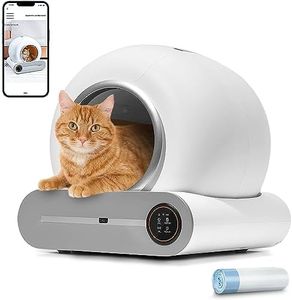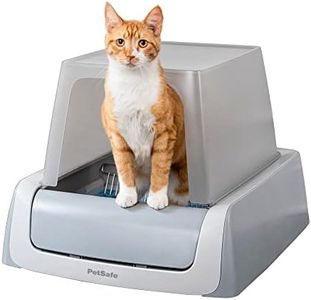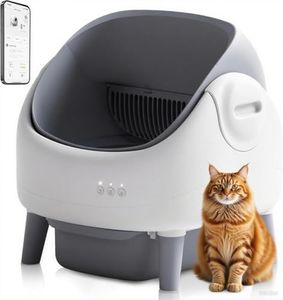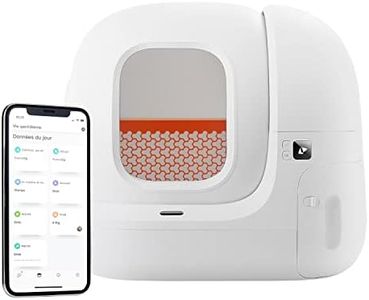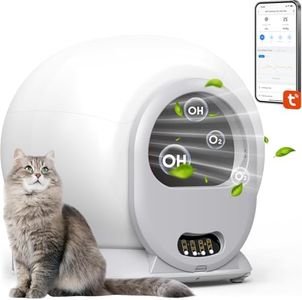We Use CookiesWe use cookies to enhance the security, performance,
functionality and for analytical and promotional activities. By continuing to browse this site you
are agreeing to our privacy policy
10 Best Self Cleaning Cat Boxes
From leading brands and best sellers available on the web.Buying Guide for the Best Self Cleaning Cat Boxes
Shopping for a self-cleaning cat box is all about finding a product that matches your cat’s habits and your own lifestyle. These boxes are designed to take away the daily scooping chore, but their effectiveness and usability can vary widely. To ensure you get the right one, it’s helpful to understand your cat’s size, temperament, and preferences, as well as how much involvement you want in maintenance. By knowing which key features matter most, you’ll avoid frustration and keep your feline friend happy.Cleaning MechanismThe cleaning mechanism is how the cat box removes waste automatically and resets itself for the next use. This can be achieved by raking, rotating, or sifting methods. Each approach has its strengths and drawbacks: raking tends to be quieter but may sometimes miss clumps, rotating drums can do a thorough job but may be bulkier, and sifting methods rely on gravity and may require special litter. When choosing, consider if your cat is sensitive to noise or movement, as some mechanisms can scare shy cats. Also, think about how thorough and reliable the mechanism is for your cleaning expectations.
Litter CompatibilityLitter compatibility indicates whether the box works with regular clumping litter, crystals, or requires proprietary refills. Some self-cleaning cat boxes only work with specific types of litter, which could affect the ongoing cost and your cat's acceptance. Check what type you currently use and whether your cat is picky about texture or scent. For flexibility and ease of switching, look for a model that supports a variety of standard litter types.
Box Size and Cat EntryThe size of the box and entry (height, opening shape, and overall capacity) determine if your cat can comfortably use the box. Larger or taller cats need a spacious box, while seniors or kittens may require lower entry points. If you live with multiple cats or bigger breeds, ensure the box is roomy and stable. When choosing, observe your cat's current litter habits and pick a box size and entry style that enables easy, stress-free access.
Odor ControlOdor control refers to the box's ability to minimize and contain smells, which is crucial for both human and feline comfort. Features like carbon filters, sealed waste trays, or antimicrobial materials can help manage odor. If your home is small or you are sensitive to smells, prioritize strong odor control features. Consider how much the box will be exposed (e.g., open spaces vs. closed rooms) and base your choice on how much odor prevention you need.
Ease of Maintenance and DisposalEven though these boxes are self-cleaning, periodic maintenance like emptying waste containers and cleaning parts is required. Some boxes use disposable waste trays or bags for simple disposal, while others require more effort. Look for simple, user-friendly designs where changing out waste or wiping surfaces is straightforward. Factor in how often you want to handle these tasks and if you want to avoid any mess or touch points.
Power Source and PlacementSelf-cleaning cat boxes may be plug-in, battery-operated, or non-electric. Electric boxes need to be placed near an outlet, while battery ones offer flexibility but may need frequent battery replacement. When deciding, think about where you want to put the box in your home and if you can provide the necessary power. If mobility or frequent rearranging is a factor, a non-electric or battery option may suit you better.
Noise LevelThe noise produced by the cleaning cycle can vary from near-silent to noticeable whirring or clanking. Some cats are startled by loud sounds and may avoid noisy boxes. Before choosing, consider your cat’s temperament—if they are skittish, look for reviews mentioning quiet operation. If box location is near bedrooms or living spaces, a quieter box will contribute to a more peaceful home.
